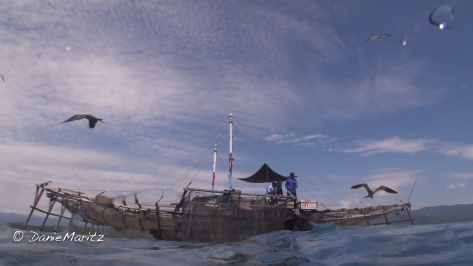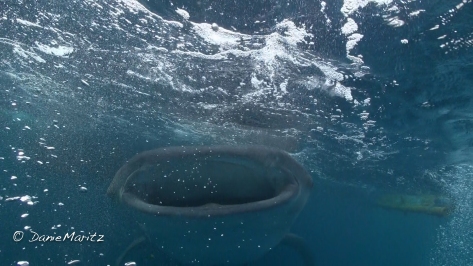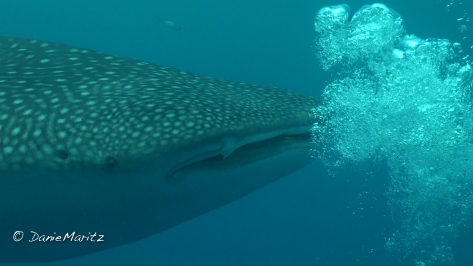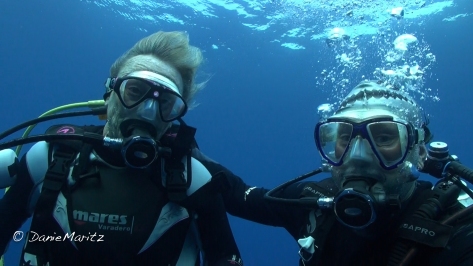
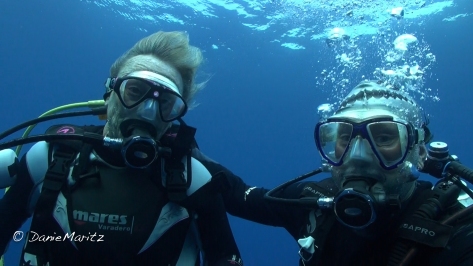
Esmé & Danie
Cenderawasih Bay is about as remote as it gets. It’s location is on the eastern fringes of the Indonesian archipelago. At the furthest south western end of Cenderawasih is Kwatisore Bay. The bay has been designated a Marine National Park.
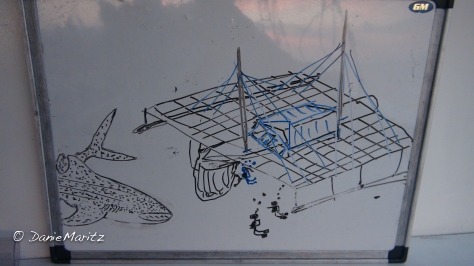
Bagan. Artwork by one of the dive guides
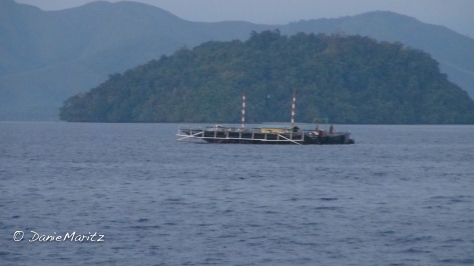
One of the bagans.
There are numerous fishing platforms, called Bagans, scattered across Kwatisore Bay especially in the vicinity of Kwatisore village.
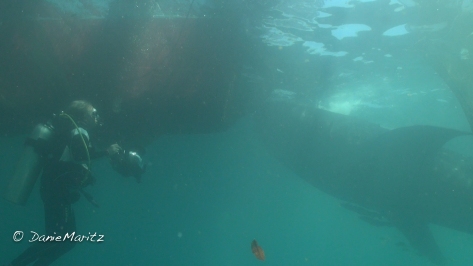
Esmé watching the whale-shark.
In Cenderawasih Bay the main draw-card is the presence of numerous whale-sharks. Their behaviour here is different from anywhere else. What makes this area so exceptional is that the whale-sharks are living live here permanently and can be seen almost every day of the year, they don’t seem to migrate. Valerie Taylor has referred to this phenomenon as the new natural wonder of our planet.
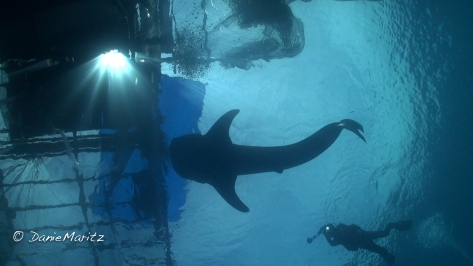
Normally whale-sharks are seen on their own with wide open mouths to filter feed on plankton. In Cenderawasih Bay whale shark encounters are completely different. Here they gather together below the bagans, feasting on the small fish that slip out of the fishing nets, sucked out by themselves, or are otherwise discarded by the fishermen.
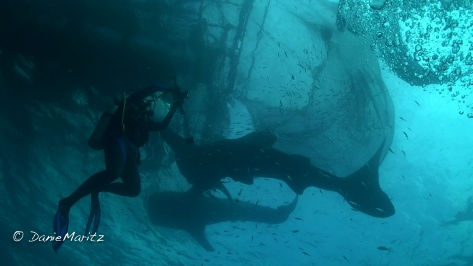
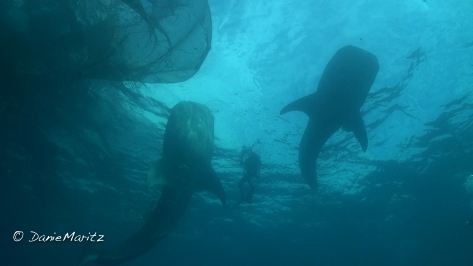
Feeding occurs either by ram filtration, or by active suction feeding. The whale-shark is an active feeder, targeting concentrations of plankton or fish. It is able to ram filter feed or can gulp in a stationary position. This is in contrast to the passive feeding basking shark, which does not pump water. Instead, it swims to force water across its gills.
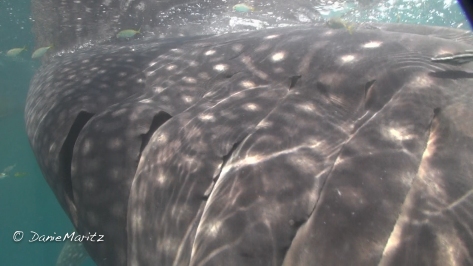
The Cenderawasih whale-sharks are opportunistic and have a feeding behavior well outside the ordinary. Normally whale-sharks feed by filtering plankton, but in this instance they await the dead fish, or almost dead, that fall or filter through the nets. In most other locations a whale-shark encounter is a less than a guaranteed affair and relies on a certain amount of good fortune.
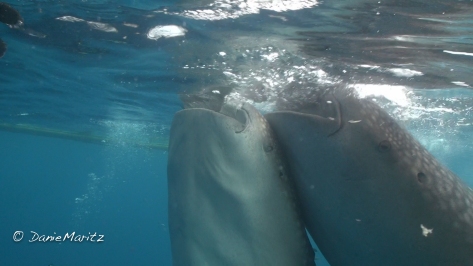
Next to the bagans is also a a good place to practice over and under split shots by bouncing up and down in the water.
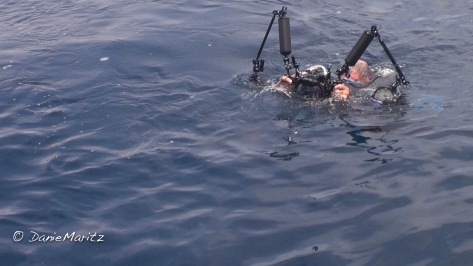
Hilmar doing his over/under split shot.
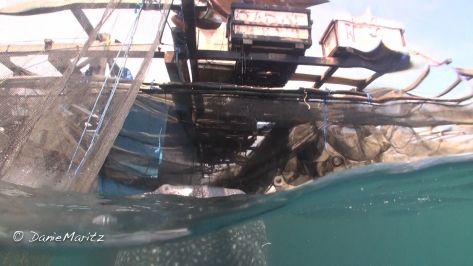
Whale-shark under the bagan.
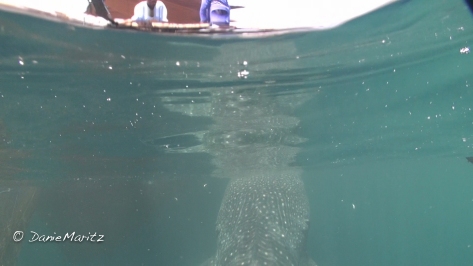
The bagans are traditional fishing platforms. Fishermen live there for months on end and spend their days fishing with hand-lines. At dusk, massive nets are lowered beneath the bagan, to about 18m. Floodlights illuminate the water from the surface to attract millions of the 7cm baitfish called ikan puri,and in the morning the nets are raised along with tons of these fish. Some are collected for use as bait for bonito, but the excess catches are left in the net, hung just beneath the platform. Nets hanging from the platforms attract the interest of the largest residents of Cenderawasih, the whale-sharks.
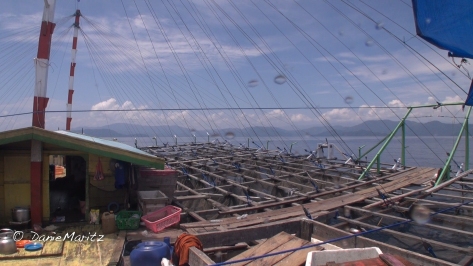
when the bagan is home
The whale-sharks in the bay have learnt to home in and suck these small fish from the net. The fishermen also feed some of the ikan puri to the whale-sharks. Maybe, that’s a way of preventing them from sucking holes in their nets. Many of the nets are in a poor state of repair and the whale sharks do not miss the opportunity for a free lunch, using their cavernous mouths to vacuum the unfortunate fish through the holes in the nets. The ikan puri fish and plankton is the favourite food of the whale-sharks.
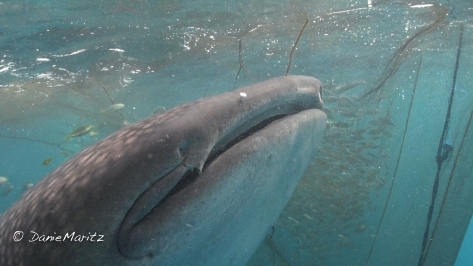
Whale-shark circling the fishing net.
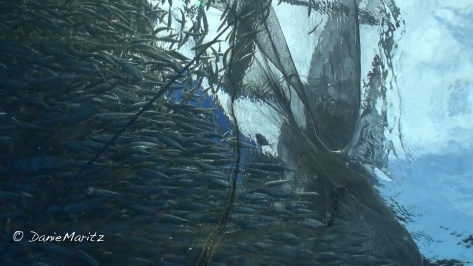
all the tasty fish inside the net.
The whale-sharks come to eat the small fish and in turn attract tuna and other gamefish which the fishermen catch and sell. This makes the whale-sharks a bringer of good luck. The locals believe that the whale-sharks are under the protection of the spirits and therefore fishing them is traditionally prohibited. The fishermen regard the arrival of the whale sharks at their particular bagan as a good omen. Whale sharks are considered to bring good fortune, so the fishermen actively encourage their presence by feeding them, scraps of small fish in an attempt to attracting greater numbers.
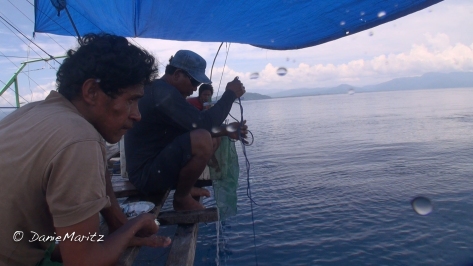
Fishermen living on the bagan.
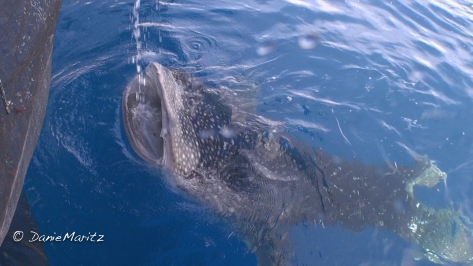
Pouring water onto/into the whale-shark.

The whale-sharks were placid and seemed unconcerned by our presence. They swam gently between us, sometimes softly nudging us out of the way. They seemed to like our bubbles and never seemed to be fazed by any camera or video strobe lights.
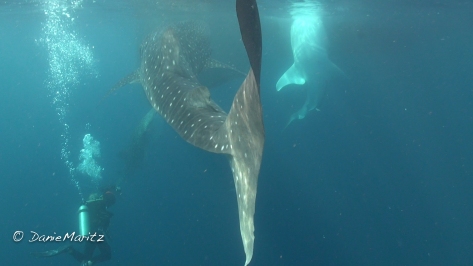
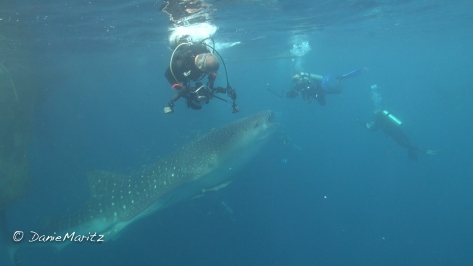
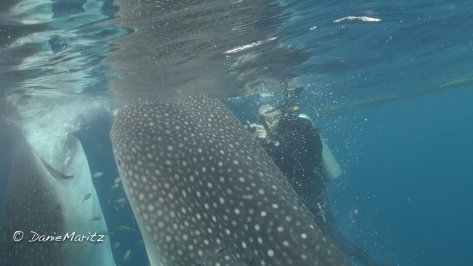
Whale sharks are docile fish and do not pose significant danger to humans.
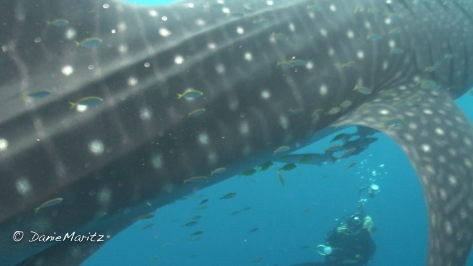
Mating and pupping of whale sharks has never been observed. They are ovoviviparous and the females can carry 300 pups at the same time. The eggs remain in the body and the females give birth to live young which are 40 to 60 cm long.
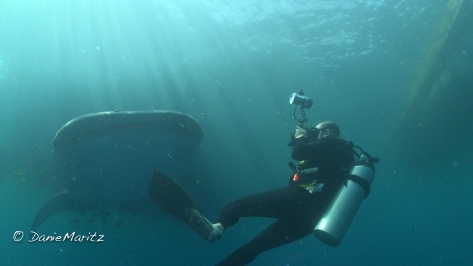
Matt and the whale-shark.
Our dive trip to the Whale-Sharks of Cenderawasih Bay was organized by Matt Weis of DPG. We stayed aboard the MSY SeaHorse, a Phinisi liveaboard, which is a very comfortable sailing ship. The Captain, owners (Txus and Ci Ci) and crew were great hosts. The accommodation and food was excellent.
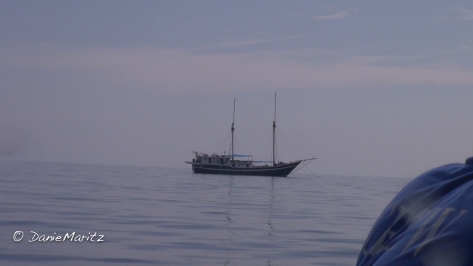
The MSY Seahorse.
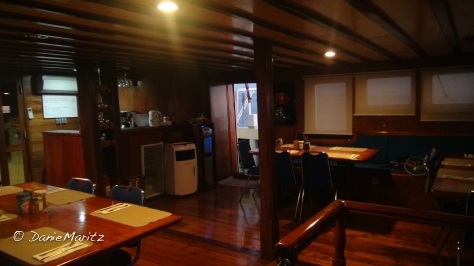
The saloon of the Seahorse.
To cater for group of underwater photographers, doing between 4-5 dives per day requires some special facilities and organisation. The SeaHorse staff did very well on that side as well.

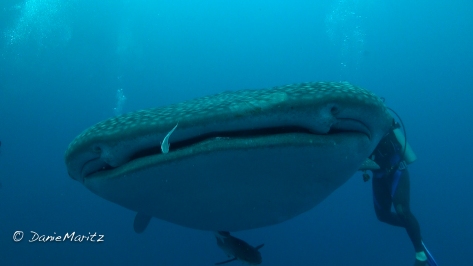
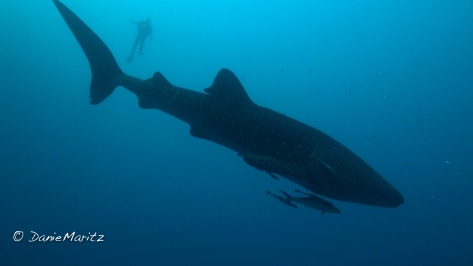
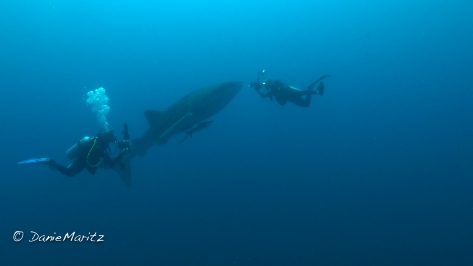
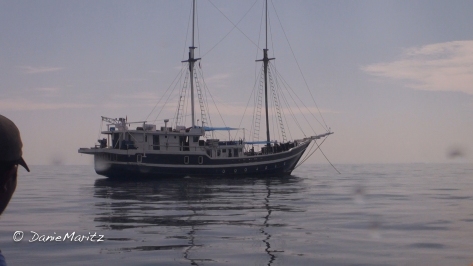
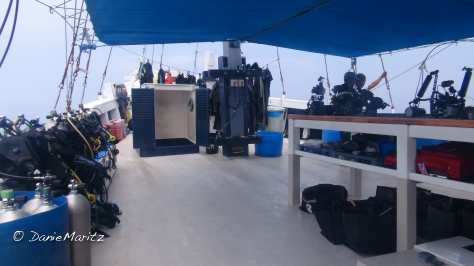
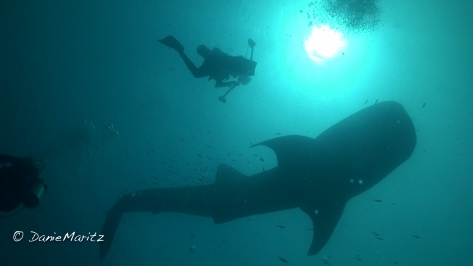
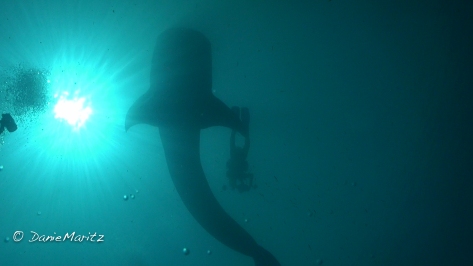
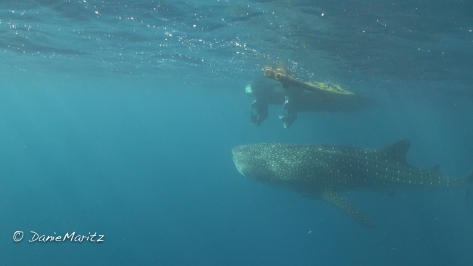
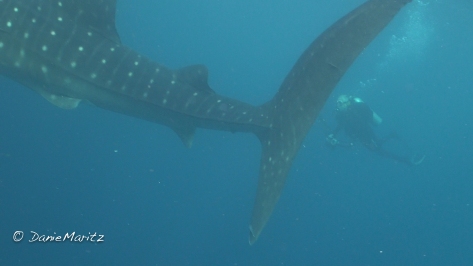
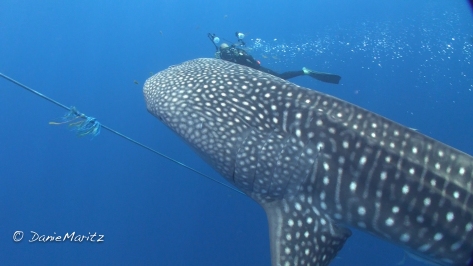
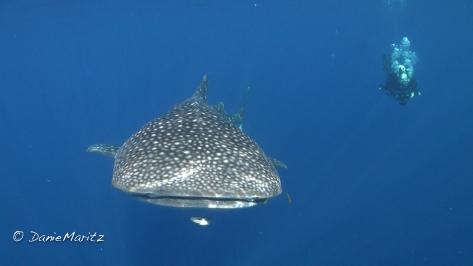
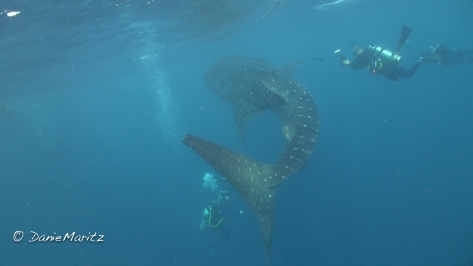
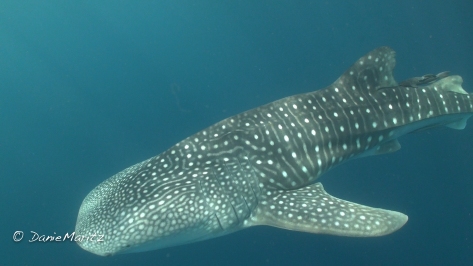
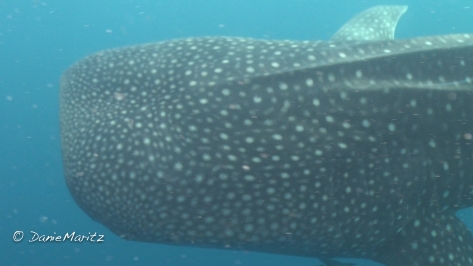
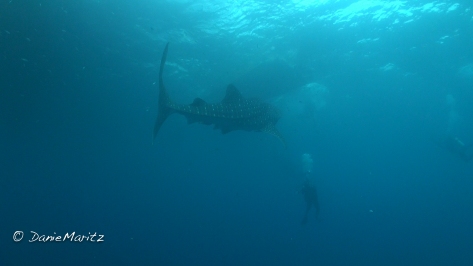
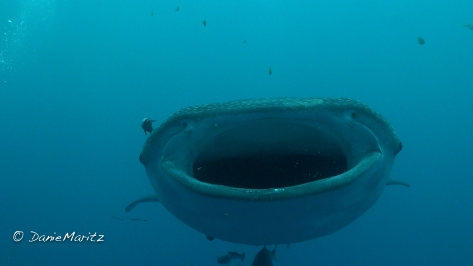
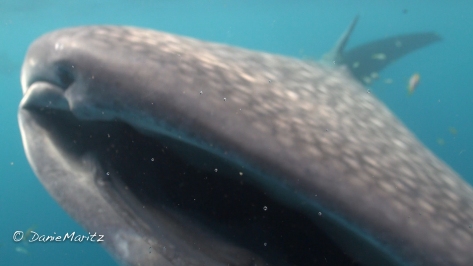
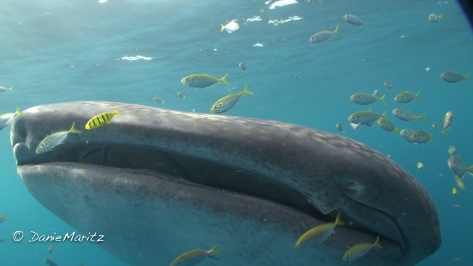

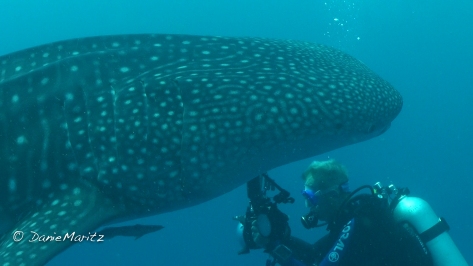
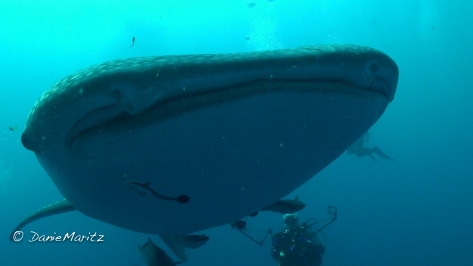
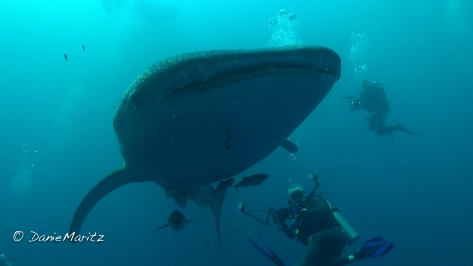
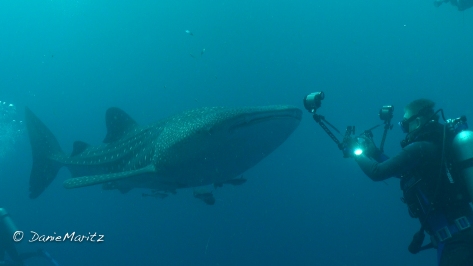
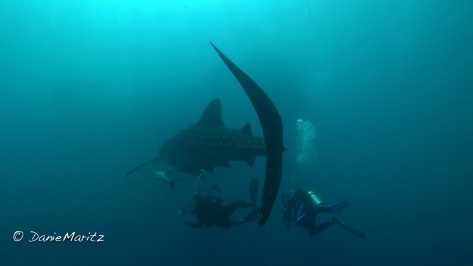
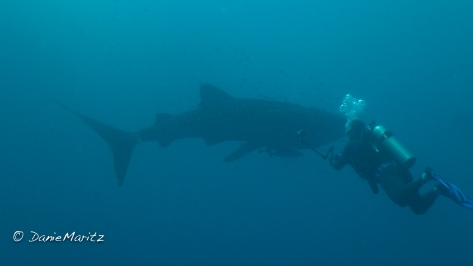
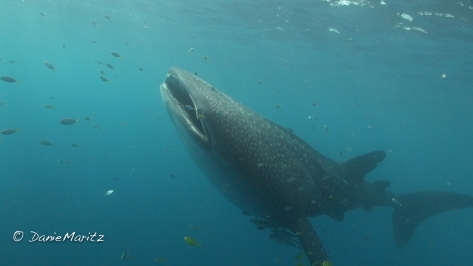
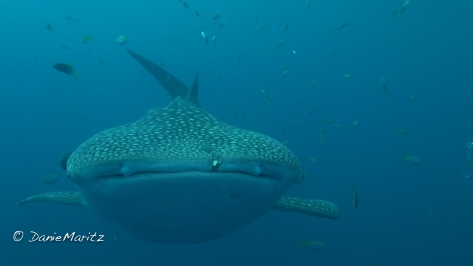
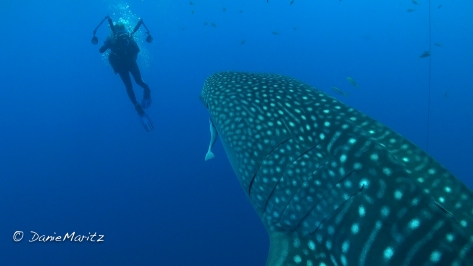 We found that when there were a couple of scuba divers in the water, the whale shark would approach and would swim past each and every one of us in turn. All you have to do is to is to stay in on place, they will find you.
We found that when there were a couple of scuba divers in the water, the whale shark would approach and would swim past each and every one of us in turn. All you have to do is to is to stay in on place, they will find you.
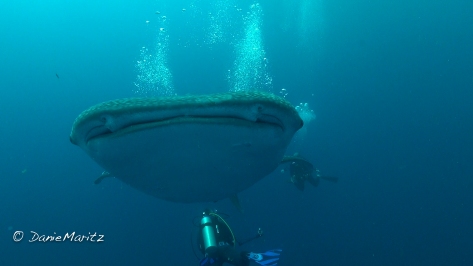
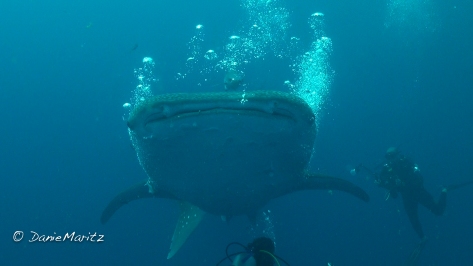 In
In 